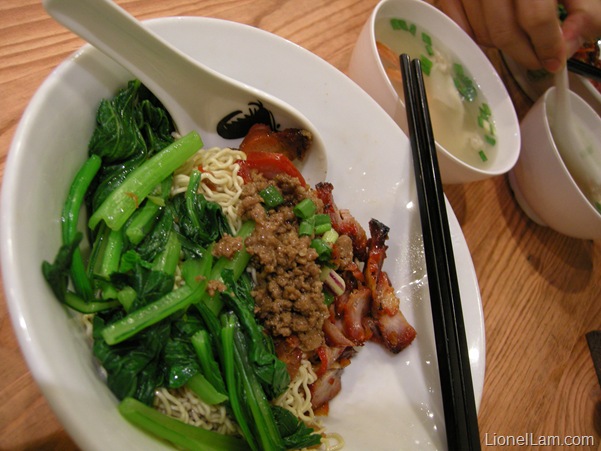Have you seen this somewhere? If you haven’t you’re probably not from Kuching…go figure.
You’ve been away from Kuching (and yes, you were born there…) for nearly a year, and your survival instincts tell you that you’ll ‘die’ if you continue to live without it. Oh, did I forget to mention? I’m so sorry, if I forgot to mention that, beyond the borders of my beloved Malaysian state on the tropical island of Borneo, the term gan lao mian in Mandarin, mee kolok in Malay, or more affectionately kolo mee in Kuching’s most famous dialect, is simply not in everyone’s vocab, so to speak. And whether or not that is a good or bad thing, most places outside of Sarawak sell kolo mee without the ‘kolo‘ so it’s usually just ‘mee’. Ah…the agony…
The Story in Brief
At the turn of the century, there came hordes of Chinese immigrants from southern China, who came pouring into Kuching and some other early settlements in Sarawak which grew into urban areas such as towns Bintulu, Sibu and Kuching’s other city, Miri. I’ve not travelled extensively enough to see if kolo mee is as popular in other parts of the state. My grandfather argued that the original kolo mee was actually a Cantonese recipe for some really dry noodle, fried in light oil with mince pork toppings and steamed vegetables with onion sauce.
That’s about it.
Today’s kolo mee is nothing like what it was like in the days long gone.
Summary of the differences:
Today’s version:
1. Dry noodles.
2. Char siew (roasted pork) topping, usually marinated in red sauce (really just some kind of pork lard)
3. Vegetable, sparingly used.
4. Mince pork topping, generous portion.
My grandfather’s version:
1. Dry noodles.
2. Char siew…errr…none?
3. Vegetables, generous amount.
4. Mince pork, a lot of it.
But perhaps the most distinguishing feature of the noodle in the past was the fact that it was really really dry, drier than today’s ‘improved’ version. Maybe that’s why it didn’t really appeal to Kuchingites of the day. Today’s version is a little ‘soupier’, just push back the noodles to one side of the bowl and you’ll see the gravy.
Kuchingites I know over here in West Malaysia are always ‘dying’ to get back home to have a bowl of what we call ‘original’ kolo mee. It’s a wonder if the original version would go unchanged elsewhere outside of Kuching. I remember clearly ordering a bowl of ‘kolo mee’ (yes, with the quotes) at a stall in Johor, and it was nothing like the ones I used to have back at home.
In recent years, a chain of restaurants ‘Jia Xiang Kuching Sarawak Kolo Mee’ sprang out of nowhere in Singapore, from a one-lot establishment to that of several branches. Time will only tell if this dish would evolve to suit the taste of the Singaporeans.
2. Char siew.
3. Vegetables, plenty.
4. Mince pork topping, generous portion.
==END==


sudah lapar… tapao for me when you get back here from sarawak can?
Awesome post. I hv linked yr post to my kolo mee story. 🙂